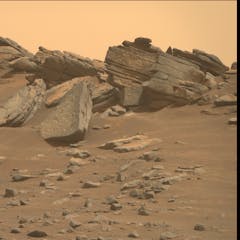
Articles on Space exploration
Displaying 1 - 20 of 299 articles

There’s intense competition between the US and China to establish bases on the Moon.

Here’s what’s going on to cause more widespread northern and southern lights.

Billionaires such as Elon Musk and Jeff Bezos are among those most vocal about the benefits of exploring, mining and colonising space.

Analysis of two major cosmic blasts deepens the mystery of where the universe’s ‘heavy’ elements come from.

Starliner is only the second vehicle to launch astronauts from US soil since the retirement of the shuttle in 2011.

China’s Change'6 is going to explore the Moon’s far side and bring back precious lunar soil for scientists to study.

China’s new mission could answer longstanding questions about the Moon.

New ideas will be key to making the mission happen after a report criticised its timescale and cost.

The Perseverance rover has arrived at what’s thought to be an ancient shoreline on Mars.

Space exploration is not a waste of resources, but a source of technological and medical advances, a tool for climate monitoring and a source of educational inspiration for youth.

A type of eclipse is crucial for measuring what’s in the atmospheres of planets orbiting distant stars.

An instrument on the Europa Clipper mission might be able to detect biological cells from space.

The Solar System could be awash with oceans, not on the surface but hidden inside the most surprising bodies

The eclipse will allow scientists to get rare measurements of the Sun’s atmosphere.

Determining whether or not life exists on another planet is an extraordinarily complicated – and expensive – scientific endeavor.

If we need to use forensic techniques in space, we’ll need to understand how things behave differently in microgravity.

The next generation of spacesuit needs to do more than simply protect an astronaut from the vacuum of space.

Has Jeff Koons’ latest high-profile stunt just proved that space is the new frontier for art?

The discovery raises big questions about widely accepted models of galaxy formation.

The mission provided details about how to deflect an asteroid should one threaten Earth in future.
